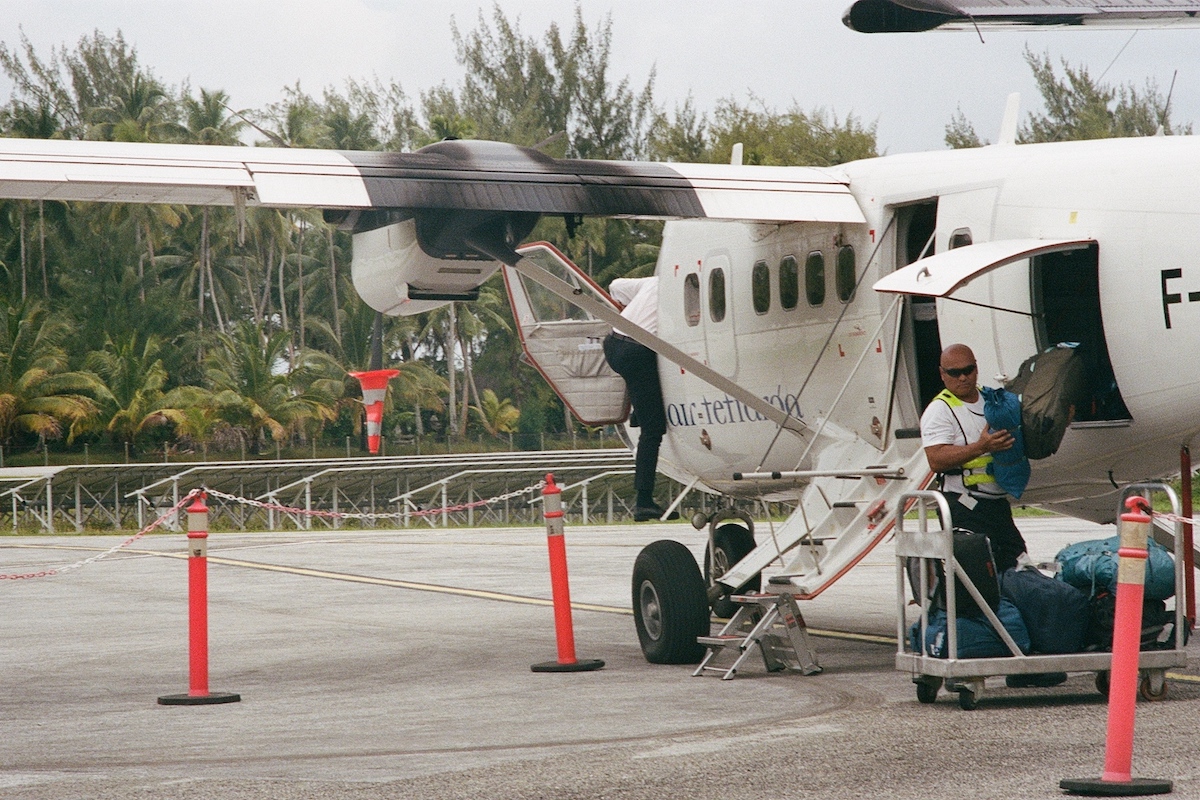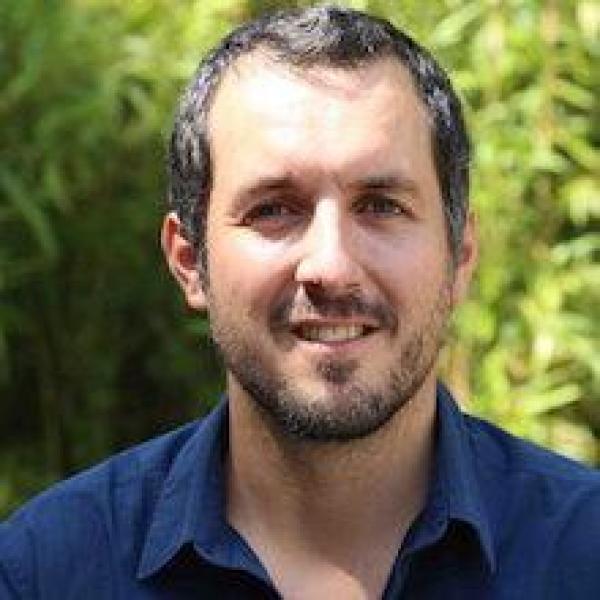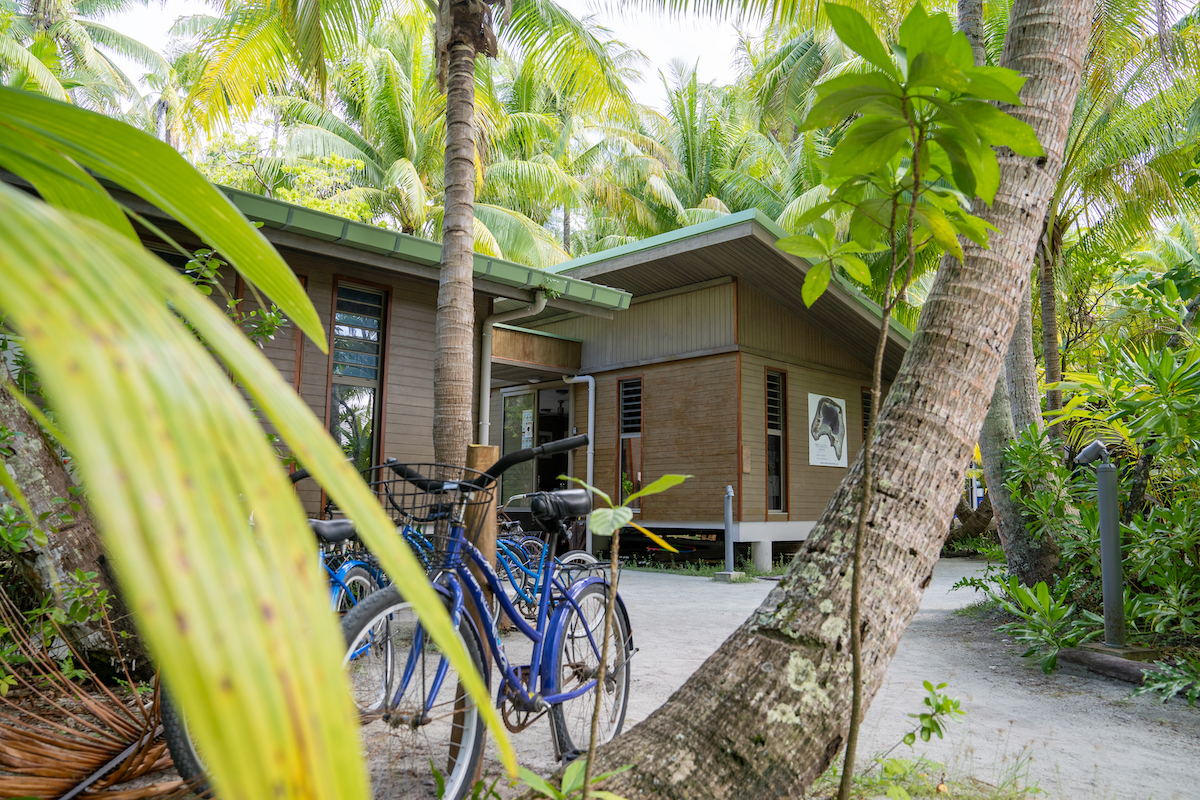

Jérôme holds a BSc. in Agronomy, a MSc. in Environmental Sciences from the engineering school ISARA in Lyon, France, a MSc. in Political Sciences from Université Montesquieu in Bordeaux and a Ph.D. in Life Sciences from Ecole Pratique des Hautes Etudes La Sorbonne. Jerôme has held a number of research and management positions in agronomy, environment and political sciences, applied to biodiversity and climate change. He worked on organic farming in Boulder, Colorado (USA), on soil ecology at IRD in Ouagadougou (Burkina Faso), on bovine reproduction at UNCEIA in Paris (France), on forest pests at INRA in Bordeaux (France), and on increasing deforestation awareness in Lamjung (Nepal). At CSIRO Darwin (Australia) in 2003, he wrote his Master's thesis in Environmental Science on the use of ants as a biological indicator to monitor the impact of grazing on biodiversity in Northern Australia rangelands. Following the completion of his Master's in Political Sciences, he worked at the European Parliament in Brussels (Belgium) where he participated in the development of a strategy for the conservation of biodiversity in European forests. In 2005, Jérôme joined the Gump station of the University of California Berkeley in Moorea (French Polynesia) to participate in a biocontrol program targeting the Glassy-Winged Sharpshooter (Homalodisca vitripennis). He was responsible for the monitoring of pest density and control agent efficiency on more than 20 French Polynesian islands. He wrote his Ph. D thesis on the biocontrol program's results and the associated inventory of native cicadellids. In 2007, Jérôme joined the IUCN (International Union for Conservation of Nature) in Brussels where he participated in the organization of a high-level international conference on climate change and biodiversity in European overseas entities, an official event of the French Presidency of the European Union held on Réunion island. He was the lead author of the background paper for this conference, a state-of-the-art 180-page book on the impact of climate change on island biodiversity, involving more than 120 contributors. In September 2008 Jérôme headed back to the Gump Station in Moorea. He was then the Coordinator and Communications Officer of the Moorea Biocode Project, a comprehensive inventory of every non-microbial species of the island of Moorea with DNA barcoding. He was then coordinating the deployment of the taxonomical teams in Moorea and was responsible for the outreach aspect of the project. During this second period in Moorea, Jérôme was also the scientific director of the Baseline Study on Climate Change in French Polynesia, the first comprehensive document on climate change for the country, funded by the Ministry of Environment of French Polynesia. He also achieved a Carbon Budget assessment for the island of Moorea and for the municipality of Moorea-Maiao, using the French Bilan Carbone methodology. In September 2010, Jérôme started working for the European Commission in Brussels, in the Directorate General EuropeAid. He was a policy officer in the Thematic Unit on Environment, responsible for Biodiversity. He participated to the UN international negotiations at the Convention on Biological Diversity in Nagoya and Hyderabad. He reviewed the policies, programmes and projects funded by the European Commission dealing with biodiversity in third countries, mainly under the ENRTP budget line (Environment and Natural Resources Thematic Programe). In particular, he secured the EU contribution to CEPF, BIOFIN and BEST. He was the main author of the EU Biodiversity for Life (B4Life)'s programming document, a EUR 800 million flagship initiative to combat the main threats to global biodiversity. Since 2013, Jérôme works for The Pew Charitable trusts, as the Director of the Pew Bertarelli Ocean Legacy in French Polynesia and in Paris. He coordinates research expeditions, public consultations, outreach projects and technical assistance to contribute to the protection of the ocean in French Polynesia and in the French overseas entities in general.
Jérôme détient un Bachelor en Agonomie et un Master en Sciences de l'Environnementde l'école d'ingénieur ISARA Lyon, ainsi qu'un Master en Sciences Politiques de l'Environnement de l'Université Montesquieu, Bordeaux et un Doctorat en Sciences de la Vie de l'Ecole Pratique des Hautes Etudes, La Sorbonne, Paris. Jérôme a travaillé pendant près de 15 ans en tant que chercheur, administrateur et manager dans le domaine de l'environnement, et en particulier sur les thématiques de la biodiversité et du changement climatique. Il a travaillé sur l'agriculture biologique à Boulder, Colorado (USA), sur l'écologie des sols à l'IRD à Ouagadougou (Burkina Faso), sur la reproduction bovine à l'UNCEIA à Paris, sur les pestes forestières à l'INRA à Bordeaux, sur la sensibilisation à la déforestation à Lamjung (Népal). Au CSIRO à Darwin (Australie) en 2003, Jérôme a réalisé sa thèse de Master sur l'utilisation des fourmis comme indicateur biologique pour mesurer l'impact du paturage sur les savannes du Nord de l'Australie. Suite à son Master en Sciences Politiques, il a travaillé au Parlement Européen à Bruxelles (Belgique) sur le développement d'une stratégie de conservation de la biodiversité dans les forêts européennes. En 2005, Jérôme a rejoint la station Gump de l'Université Californie Berkeley à Moorea (Polynésie française), pour participer à un programme de lutte biologique contre la cicadelle pisseuse (Homalodisca vitripennis). Il était responsable du suivi de la densité de la peste et de l'efficacité de l'agent de lutte dans plus de 20 îles de Polynésie françaie. Il a écrit sa thèse de Doctorat sur les résultats de ce programme de lutte et sur l'inventaire associé des cicadelles indigènes de Polynésie française. En 2007, Jérôme a travaillé avec l'UICN (Union International pour la Conservation de la Nature) à Bruxelles sur l'organisation d'une conférence internationale sur la biodiversité et le changement climatique dans l'outre mer européen, un évènement officiel de la Présidence française de l'Union Européenne, tenu à l'Île de la Réunion en 2008. Jérôme était alors l'auteur principal du document de référence de cette conférence, un ouvrage de 180 pages sur les impacts du changement climatique sur la biodiversité d'outre mer, impliquant plus de 120 contributeurs. En 2008, Jérôme retourna à l'Université de Berkeley à Moorea pour travailler sur le projet Moorea Biocode, un inventaire complet de la biodiversité des espèces non microbiennes de Moorea, terrestres et marines, avec le séquencage d'un code barre génétique d'identification pour chaque espèce collectée. Jérôme était alors responsable de l'organisation des expéditions scientifiques déployées sur le terrain et de la communication locale. Pendant cette période, Jérôme a co-écrit une étude sur les enjeux du changement climatique en Polynésie française, la première communication du Pays sur le changement climatique, financée par le Ministère de l'Environnement polynésien. Il a aussi réalisé le Bilan Carbone de l'île de Moorea et de la municipalité de Moorea, en coordination avec l'ADEME. En 2010, Jérôme a rejoint la Commission Européenne à Bruxelles, à la Direction EuropeAid, comme chargé politique dans l'unité thématique sur l'environnement, responsable des dossiers biodiversité. Il a participé aux négociations internationales dans le cadre de la Convention de l'ONU sur la Biodiversité (CBD) à Nagoya (Japon) et Hyderabad (Inde). Il a participé à l'identification, au financement et au suivi de la mise en oeuvre des projets sur la biodiversité menés dans les pays tiers, principalement sous la ligne budgétaire ENRTP. Il a notamment sécurisé le financement européen des projets BEST, BIOFIN et CEPF. Il était l'auteur principal de la programmation de l'initiative "Biodiversity for Life (B4Life)", une programme phare de l'Union Européenne de 800 million d'Euros pour combattre les principales menaces pour la biodiversité au niveau international. Depuis 2013, Jérôme travaille pour le Pew Charitable Trusts comme Directeur du programme Pew Bertarelli en Polynésie française et à Paris. Il coordonne des expéditions de recherche, des consultations publiques, des projets de sensibilisation et d'assistance technique pour contribuer à la protection des océans en Polynésie française et dans les outremers français en général.
Main technical reports
Petit JN. et al. 2018. Te Tai Nui a Hau, Projet de grande aire marine protégée des îles Marquises. Communauté de Communes des îles Marquises.
Petit JN. et al. 2016. Rahui Nui No Tuha'a Pae, Projet de grande réserve marine des îles Australes. Pew, FAPE, Communes des Australes.
Roger de Villers P et Petit JN. 2015. Ressources halieutiques, pêche hauturière et conservation en Polynésie française.The Pew Charitable Trusts, Polynésie, Tahiti. 97 pp.
Tanret D.,Petit JN. et Aussedat N., 2015. Outils juridiques disponibles pour la création de grandes aires marines protégées en Polynésie française.Pew Polynésie française. 10 pp.
Salvat B, Bambridge T, Tanret D et Petit JN. 2015. Environnement marin des Iles Australes.Institut des Récifs Coraliens Polynésiens CRIOBE et The Pew Charitable Trusts. Polynésie française, Tahiti. 342pp.
Petit JN, Du Prel P et Laitame T. 2015. In: Salvat B. Bambridge T, Tanret D et Petit J. 2015. Le rahui à Rapa: une mesure de préservation communautaire des ressources marines.Environnement marin des Iles Australes. IRCP CRIOBE Pew. Polynésie française, Tahiti. 10 pp.
Petit JN et Tanret D. 2014. Ensemble, protégeons les océans de Polynésie française.The Pew Charitable Trusts. Polynésie française, Tahiti. 13 pp.
Tanret D. et Petit JN. 2014. Bande dessinée sur la protection des océans en Polynésie française. 30 pp.
Petit JN. 2013. Lutte biologique contre la cicadelle envahissante Homalodisca vitripennis en Polynésie française. Thèse de Doctora EPHE Paris La Sorbonne. 107 pp.
Petit JN et al 2012. Life, lives, livelihoods: The European Commission's work on Biodiversity and Development. European Commission, Brussels. 28pp.
Petit JN & Avagliano E. 2010. Bilan Carbone 2009 de la mairie de Moorea-Maiao. UC Berkeley. Mairie de Moorea-Maiao. 60 pp.
Avagliano E & Petit JN. 2009. Etat des lieux sur les enjeux du changement climatique en Polynésie française. Ministère de l'Environnement de la Polynésie française, Direction de l'Environnement de la Polynésie française, Station Gump, UC Berkeley. 90 pp.
Petit JN & Prudent G. 2008. Climate change and biodiversity in the European Union overseas entities. (French version) IUCN, Brussels. 174 pp.
McNeely J & Petit JN. 2008. On the front line: The EU's overseas islands battle climate change. IUCN Pan European Newsletter, Islands of Hope, Volume 16/2008.
Petit JN & Claridge E. 2007. Mission interdisciplinaire d'étude de l'île de Mohotani (Mars 2007), inventaire entomologique préliminaire. Université de Californie Berkeley, station Gump. Rapport réalisé pour le compte de la Direction de l’Environnement de Polynésie française. 30 pp.
Petit JN, Hoddle MS, Grandgirard J, Roderick GK, Davies N. 2007. Biological control of the glassy-winged sharpshootter in French Polynesia. Factsheet. Gump station. 8 pp.
Main publications in scientific journals:
Grandgirard J, Hoddle MS, Petit JN, Roderick GK, Davies N. 2009. Classical biological control of the glassy-winged sharpshooter, Homalodisca vitripennis, by the egg parasitoid Gonatocerus ashmeadi in the Society, Marquesas and Australs archipelagos of French Polynesia. Biological Control. 48:155-163.
Petit JN, Hoddle MS, Roderick GK, Grandgirard J, Davies N. 2009. Successful spread of a biocontrol agent reveals a biosecurity failure: Elucidating long distance invasion pathways for Gonatocerus ashmeadi in French Polynesia. BioControl. Volume 54, Number 4, 485-495
Grandgirard J, Hoddle MS, Petit JN, Roderick GK, Davies N. 2008. Distribution and seasonal abundance of the invasive leafhopper Sophonia orientalis ( = S. rufofascia) (Hemiptera: Cicadellidae) in French Polynesia. Pan Pacific Entomologist. submitted
Grandgirard J, Hoddle MS, Petit JN, Roderick GK, Davies N. 2008. Engineering an invasion: classical biological control of the glassy-winged sharpshooter H. Biological Invasions. 10:135-148.
Petit JN, Hoddle MS, Grandgirard J, Roderick GK, Davies N. 2008. Short distance dispersal behavior and establishment of the parasitoid Gonatocerus ashmeadi (Hymenoptera: Mymaridae) in Tahiti: Implications for its use as a biological control agent against Homalodisca vitripennis (Hemiptera: Cicadellidae). Biological Control. 45:344-352.
Petit JN, Hoddle MS, Grandgirard J, Roderick GK, Davies N. 2008. Invasion dynamics of the glassy-winged sharpshooter Homalodisca vitripennis (Germar) (Hemiptera: Cicadellidae) in French Polynesia. Biological Invasions. 10:955-967.
Grandgirard J, Hoddle MS, Triapitsyn SV, Petit JN, Roderick GK, Davies N. 2007. First records of Gonatocerus dolichocerus Ashmeadi (Hymenoptera: Mymaridae), Centrodora sp. (Hymenoptera : Aphelinidae), Chaetomymar sp. and Anagrus sp.(Hymenoptera: Mymaridae) in French Polynesia with notes on egg parasitism of the glassy-winged sharpshoo. Pan-Pacific Entomologist. 83:177-184.
Grandgirard J, Hoddle MS, Petit JN, Percy DM, Roderick GK, Davies N. 2007. Pre-introductory risk assessment studies for Gonatocerus ashmeadi (Hymenoptera: Mymaridae) for use as a classical biological control agent against Homalodisca vitripennis (Hemiptera: Cicadellidae) in the Society Islands of French Polynesia. Biocontrol Science and Technology. 17:809-822.
Hoddle M, Grandgirard J, Petit JN, Roderick GK, Davies N. 2006. Glassy-winged sharpshooter K.O.'ed -- first round -- in French Polynesia.PDF Biocontrol News and Information. 27:47N-49N.
Grandgirard J, Hoddle MS, Roderick GK, Petit JN, Percy D, Putoa R, Garnier C, Davies N. 2006. Invasion of French Polynesia by the glassy-winged sharpshooter, Homalodisca coagulata (Hemiptera: Cicadellidae): A new threat to the South Pacific. Pacific Science. 60:429-438.
Jactel H, Petit JN, Piou D, Desprez-Lousteau ML. 2005. A meta-analysis of forest pest and disease response to water stress. ECOFOR Freiburg International Symposium 17-19 Novembre 2004
Some interviews and talks
2016. Conférence TEDX sur le rahui polynésien.
2018. Interview pour Polynésie Première sur le projet d'Aire Marine Protégée aux Marquises.
2015. Interview pour Polynésie Première sur les stocks halieutiques en Polynésie française.
2015. Interview pour Polynésie Première sur le projet d'Aire Marine Protégée aux Australes.
2009. Interview pour TNTV sur l’état des lieux sur le changement climatique de Polynésie française.
Documentaries
Some media articles
Petit JN., Daniel Pauly (Professeur à l'Université de la Colombie Britannique), Isabelle Autissier (Présidente de WWF France), Jean-François Julliard (Directeur de Greenpeace France), Romain Troublé (Directeur de la Fondation Tara Expéditions), Patricia Ricard (Présidente de l'Institut océanographique Paul Ricard), Pierre-Yves Cousteau (Fondateur de Cousteau Divers), Dr François Sarano (Fondateur de Longitude 181), Prof. Bernard Salvat (Professeur émérite à l'Ecole Pratique des Hautes Etudes), Dr Serge Planes (Directeur de Recherche au Centre national de la recherche scientifique). 2018. Comment la France pourrait devenir un leader mondial de la protection des océans. Huffington Post.
Petit JN. 2017. Les navigateurs sillonnaient le Pacifique en suivant le chemin des étoiles. Tahiti Infos.
Petit JN. 2017. L’expédition de la pirogue Fa’afaite a révélé un important blanchissement corallien à Rurutu.
Petit JN. 2016. Quelques idées reçues sur la pêche hauturière en Polynésie française.Tahiti Infos.
Petit JN. 2016. La pêche excessive du thon est un enjeu aussi bien écologique qu’économique. Tahiti Infos.







